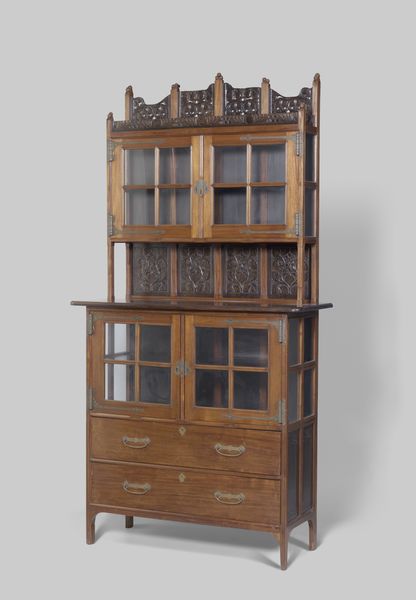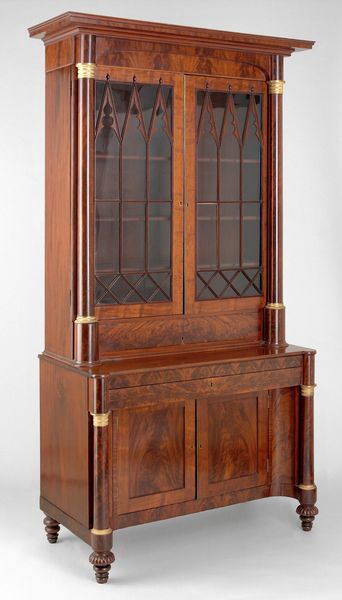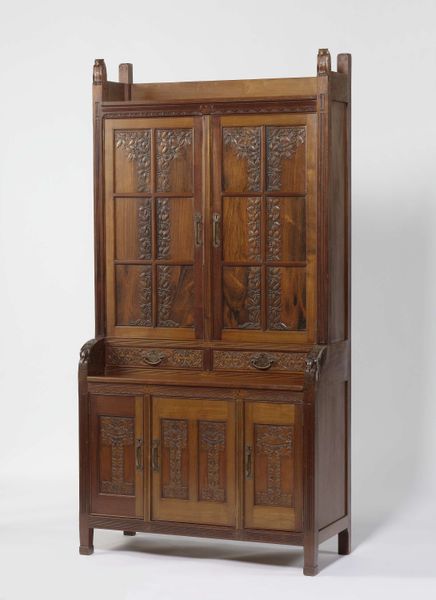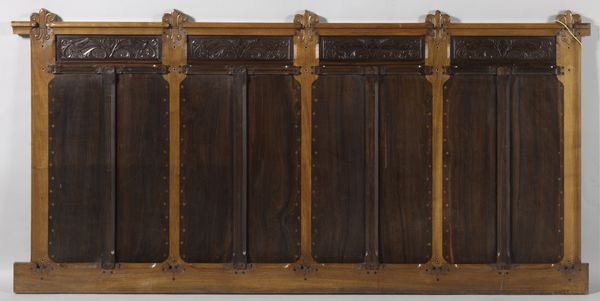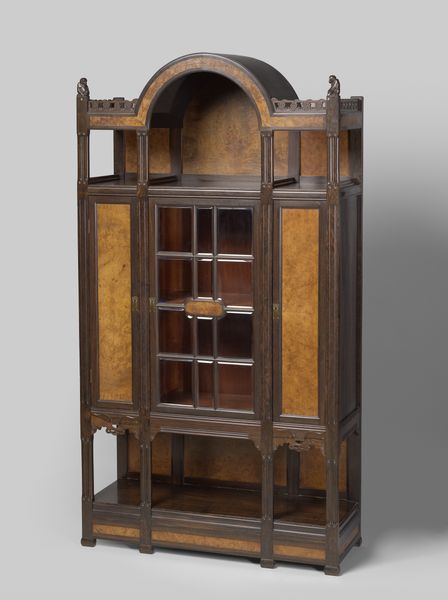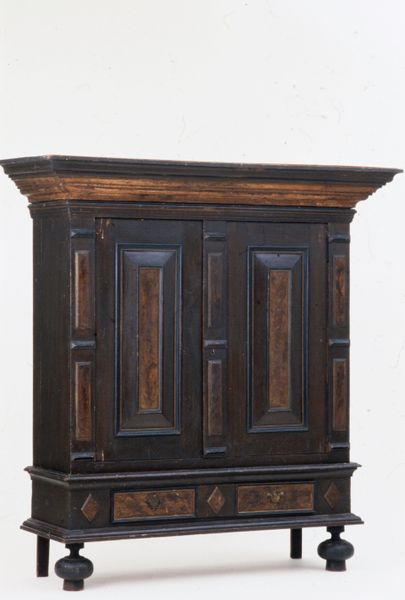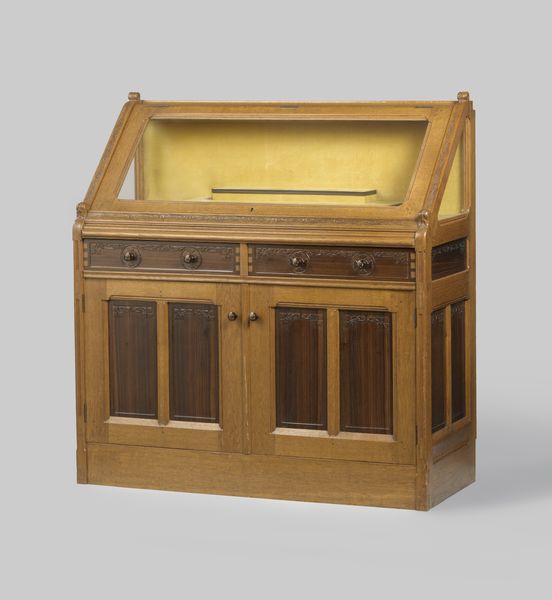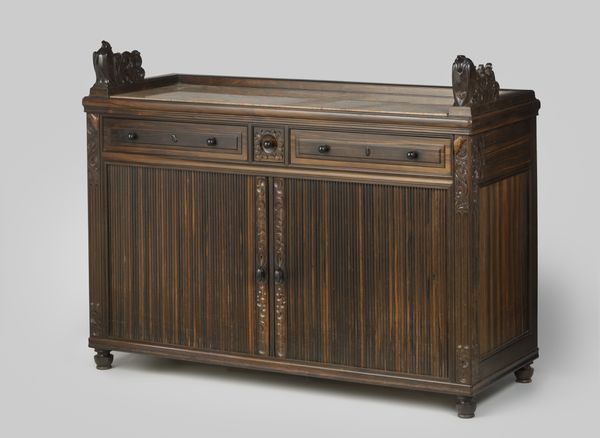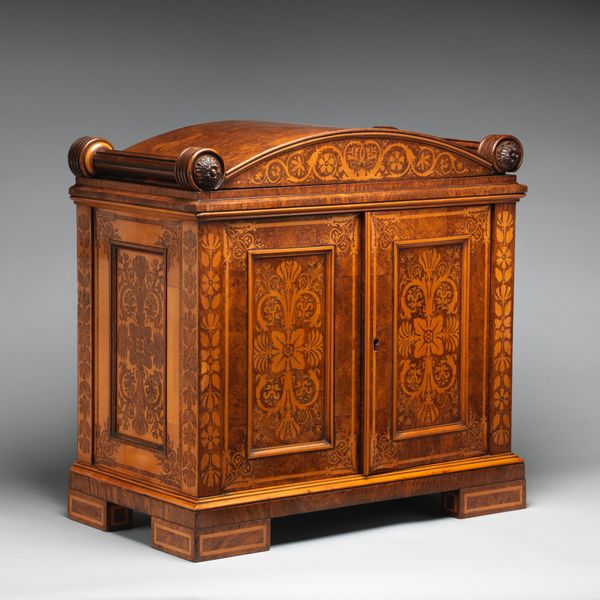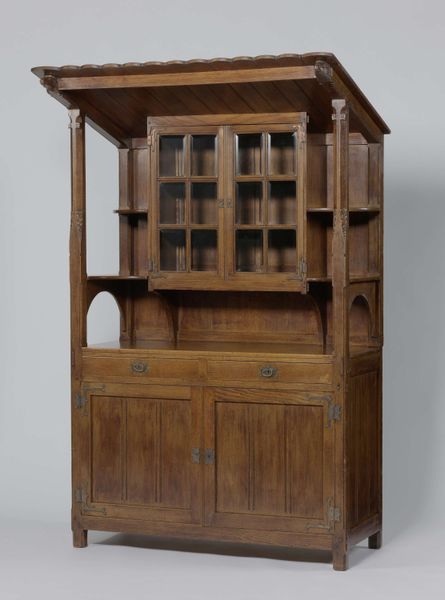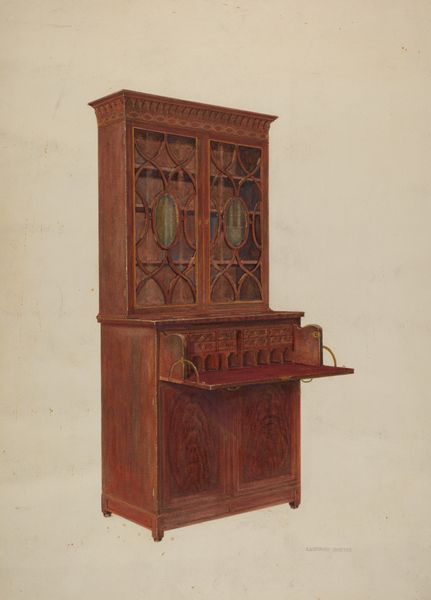
wood, architecture
#
art-nouveau
#
architecture model
#
wooden texture
#
wood
#
decorative-art
#
architecture
Dimensions: height 134.5 cm, width 121.0 cm, depth 50.0 cm, weight 98 kg
Copyright: Rijks Museum: Open Domain
Editor: This is Theo Nieuwenhuis’s “Boekenkast, tweedeurs,” or two-door bookcase, made sometime between 1910 and 1920. The wood and glass give it a stately, solid presence. What draws your eye when you look at it? Curator: I immediately notice the stylized plant motifs. They’re not simply decorative; they’re infused with symbolic meaning. Consider the upward reach, a visual echo of growth and aspiration, mirroring perhaps the knowledge contained within. What feelings does that evoke? Editor: I guess it’s like the contents of the bookcase themselves aspire upwards. It gives a sense of value and importance to books as knowledge and art. But the design also looks pretty gothic to my eyes, especially the carving in the doors below the glass. How does this bookcase, as decorative art, relate to Art Nouveau? Curator: Exactly. That subtle Gothic echo is part of what makes it distinctly Art Nouveau, rather than merely mimicking nature. Nieuwenhuis synthesizes various historical and cultural threads. These visual echoes of past styles often evoke shared memories and a sense of continuity, don't you think? Like a silent dialogue across generations. Editor: Yes, that makes a lot of sense. I like the idea of it being a link. So much more than just a pretty bookcase. I was expecting it to just be a piece of furniture. Curator: Think about how objects like this—meant for everyday use— shape our understanding of beauty and utility, function and meaning. This bookcase acts as a keeper of knowledge and a monument to the enduring power of visual language. It certainly holds its own even a hundred years on. Editor: It's amazing how many layers are present even in something seemingly simple. I’ll definitely see such designs differently going forward.
Comments
No comments
Be the first to comment and join the conversation on the ultimate creative platform.
